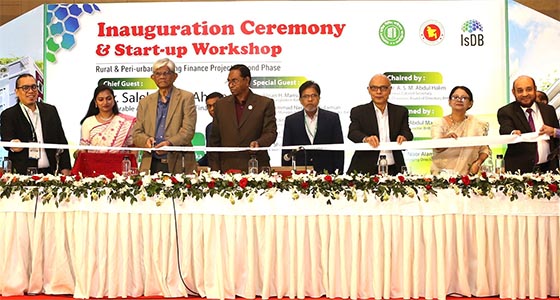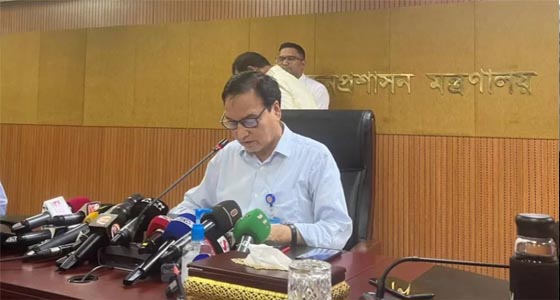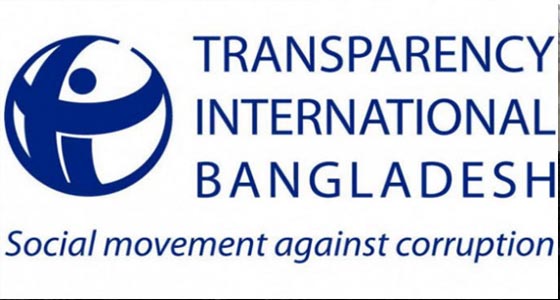Flood in Tripura is a natural disaster but flood in Bangladesh is India-made
- Last Update : 11:53:53 am, Friday, 23 August 2024
- / 821 Read Count
Md. Shawkat Alam Faisal
On August 21, 2024, a massive flood catastrophe hit Bangladesh after India opened the gates of the Dambur Dam in Tripura without warning. This release of water, combined with unrelenting rainfall, caused disastrous floods in various districts of Bangladesh, notably Cumilla, Brahmanbaria, Feni, and sections of Noakhali.
The unexpected entry of water from the Dambur Dam exacerbated the already rising levels in rivers including the Muhuri, Gumti, and Khowai, causing them to flood. This resulted in enormous areas being swamped, displacing millions of people and shutting off vital infrastructure. Residents of Feni and Cumilla were caught off guard, resulting in widespread destruction of homes, crops, and roadways. The situation was exacerbated by ongoing torrential rainfall, which had already soaked the ground.
The Gomti River, in instance, surged severely, exceeding the danger level by 50 centimetres, leaving many stranded.
Local officials, in collaboration with the Border Guard Bangladesh (BGB), Bangladesh Army, and Navy, have worked diligently to rescue stranded residents and offer emergency help. However, the sheer scope of the disaster has overwhelmed efforts, and many regions remain unreachable. The flooding has not only interrupted daily living, but it also threatens to trigger a long-term humanitarian disaster, with food shortages and waterborne diseases looming big in the afflicted areas.
The lack of previous notice from Indian authorities about the dam’s water release has sparked criticism, highlighting worries about the need for improved transboundary water management and communication between the two nations to avoid similar disasters in the future. This flood serves as a sharp reminder of downstream nations’ vulnerability to upstream water management decisions, emphasizing the critical need for improved cross-border communication and collaboration in managing shared water resources.
The floods in Bangladesh on August 21, 2024, was directly related to the situation in India’s Tripura state. Heavy monsoon rains had been hammering Tripura for days, causing rising water levels in rivers and reservoirs, notably the Dambur Dam. To avoid a dam failure owing to excessive pressure, Tripura officials were compelled to unlock the dam’s gates. However, the timing and lack of prior discussion with Bangladesh were devastating. While the discharge reduced the immediate threat to Tripura, it moved the risk downstream, to Bangladesh, which bore the brunt of the floodwaters.
While the flooding in Tripura was mostly a natural disaster caused by heavy rains and river overflows, the later floods in Bangladesh can be classified as a man-made crisis, notably precipitated by India’s activities. The rapid release of water from the Dambur Dam in the middle of the night, with no previous notice or consultation with Bangladesh, transformed what may have been a manageable scenario into a full-fledged calamity. This unplanned discharge not only aggravated the flood conditions, but also jeopardized millions of lives, showing the dangers of making unilateral decisions about shared water resources. The lack of communication and disdain for downstream consequences highlight the critical need for more responsible and collaborative water management practices between the two countries.
This current flooding episode is not a unique instance; rather, it is part of India’s disturbing trend of water management practices, which have frequently damaged Bangladesh. Historically, India has closed dam gates throughout the summer to retain water for agricultural and industrial use, depriving downstream regions in Bangladesh of critical water supply. However, during the monsoon season, these gates are frequently opened unexpectedly, allowing massive amounts of water into Bangladesh, which has already been drenched by seasonal rains. This deliberate manipulation of water flow results in disastrous floods in Bangladesh, causing massive destruction and loss of life. Such behaviors not only contradict good neighbor standards, but also pose major ethical considerations concerning the use of shared water resources.
Dam construction on transboundary or international rivers presents considerable problems and hazards because of the possible impact on numerous countries with shared water resources. These dams can alter the normal flow of rivers, influencing water supply, sediment movement, and ecosystem health downstream. This can cause ecological imbalances, such as decreased fish populations and changed wetlands, which can have a significant impact on the livelihoods of communities that rely on these rivers. Furthermore, disputes over water allocation and dam management can strain diplomatic relations between neighboring countries, potentially leading to conflict.
To avoid these challenges, cooperative and inclusive management solutions are required, which ensure that all impacted nations participate in decision-making processes and share benefits and obligations fairly. The collaborative approach contributes to the ecological integrity of river systems while promoting peaceful international ties.
According to several reports, India has built dams on 30 of the 54 transboundary rivers it shares with Bangladesh, drastically limiting the natural flow of water into the country. One of the most worrying features of India’s River Linking Projects is the projected diversion of water from major rivers such as the Jamuna and Padma into southern India. This redirection threatens to deprive Bangladesh of critical water resources, intensifying drought conditions in the dry season and worsening monsoon floods when India releases extra water by opening dam gates. Despite these substantial consequences, India has frequently violated international water rules and bilateral agreements in its pursuit of these initiatives.
The problem has been exacerbated by the strong relationship between the Indian government and Bangladesh’s former ruling party, the Awami League, which was viewed as unduly accommodating to India’s interests during its 16-year reign. This coalition has expressed worry about India’s failure to advocate for Bangladesh’s rights and interests in transboundary water management, resulting in recurrent acts of “water terrorism” by India.
In the several contracts and treaties governing water and river management between Bangladesh and India, India has historically maintained a strong position. These agreements have overwhelmingly favored India, leaving Bangladesh with marginal benefits that frequently pale in comparison to the severe negative consequences they face. For example, the Ganges Water Treaty has been criticized for greatly favoring India in water distribution, leaving Bangladesh with insufficient water flow during important periods. Furthermore, these agreements frequently ignored or violated international water rules, exacerbating Bangladesh’s problems. Because of the unequal character of these accords, Bangladesh’s burdens, such as increased flooding, drought, and ecological destruction, considerably outweigh whatever minor gains it may obtain.
India’s unilateral actions, such as opening dam gates without notice, continue to violate international conventions, highlighting the need for a more balanced and legally sound approach to managing shared water resources between the two countries. This reoccurring issue highlights the need for more equitable and open water-sharing arrangements between the two countries to avoid future human-caused disasters.
The writer is an, Apprentice Lawyer at the Bangladesh Bar Council.

















